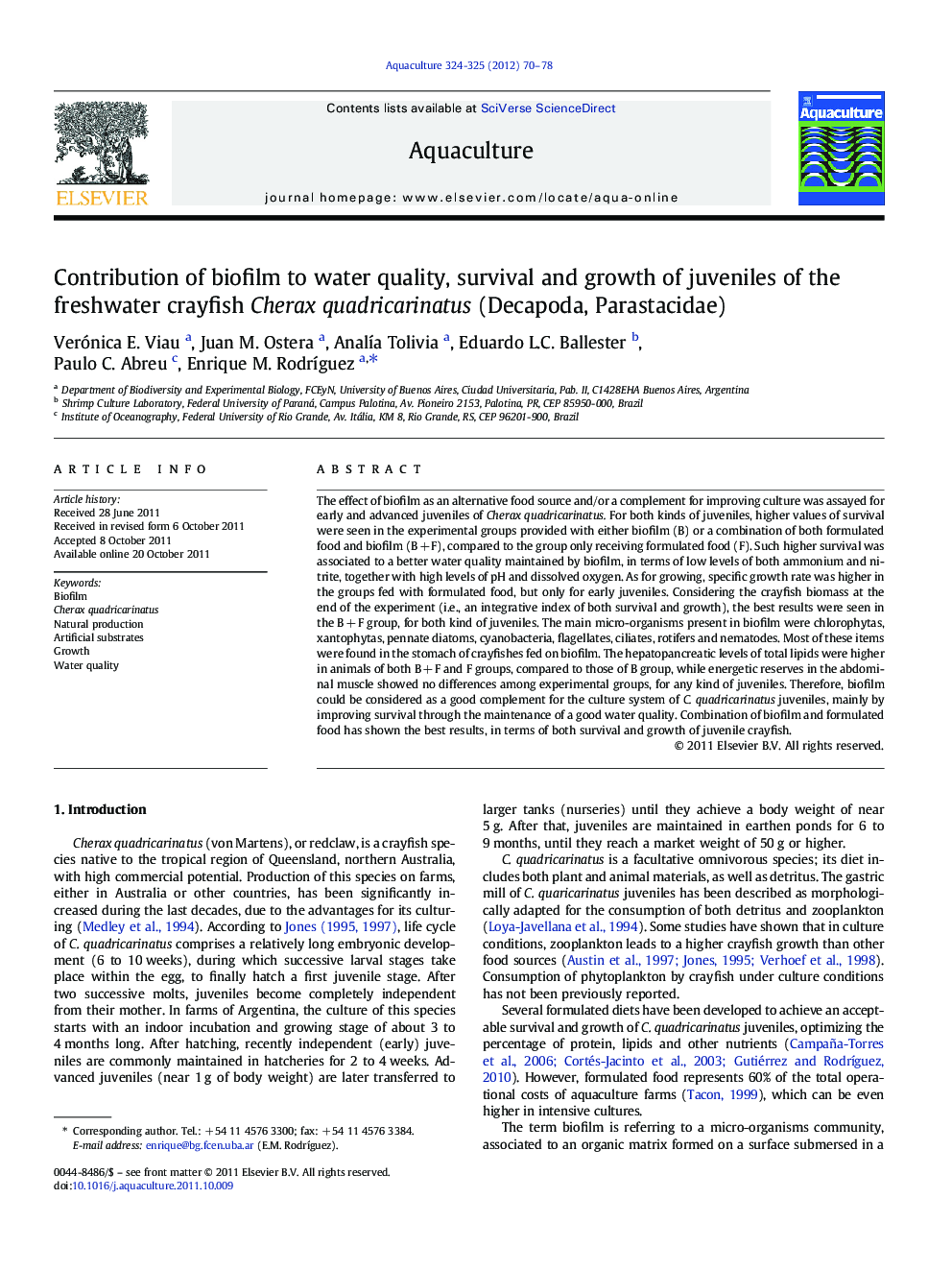| Article ID | Journal | Published Year | Pages | File Type |
|---|---|---|---|---|
| 2422761 | Aquaculture | 2012 | 9 Pages |
The effect of biofilm as an alternative food source and/or a complement for improving culture was assayed for early and advanced juveniles of Cherax quadricarinatus. For both kinds of juveniles, higher values of survival were seen in the experimental groups provided with either biofilm (B) or a combination of both formulated food and biofilm (B + F), compared to the group only receiving formulated food (F). Such higher survival was associated to a better water quality maintained by biofilm, in terms of low levels of both ammonium and nitrite, together with high levels of pH and dissolved oxygen. As for growing, specific growth rate was higher in the groups fed with formulated food, but only for early juveniles. Considering the crayfish biomass at the end of the experiment (i.e., an integrative index of both survival and growth), the best results were seen in the B + F group, for both kind of juveniles. The main micro-organisms present in biofilm were chlorophytas, xantophytas, pennate diatoms, cyanobacteria, flagellates, ciliates, rotifers and nematodes. Most of these items were found in the stomach of crayfishes fed on biofilm. The hepatopancreatic levels of total lipids were higher in animals of both B + F and F groups, compared to those of B group, while energetic reserves in the abdominal muscle showed no differences among experimental groups, for any kind of juveniles. Therefore, biofilm could be considered as a good complement for the culture system of C. quadricarinatus juveniles, mainly by improving survival through the maintenance of a good water quality. Combination of biofilm and formulated food has shown the best results, in terms of both survival and growth of juvenile crayfish.
► We study the effect of biofilm on survival and growth of juvenile crayfish, in a 30-day experiment. ► Higher survival was seen in the groups provided with either biofilm (B) or a combination of both formulated food and biofilm (B + F), compared to the group only receiving formulated food (F). ► This higher survival was associated to a better water quality maintained by biofilm (low levels of both ammonium and nitrite, together with high levels of pH and dissolved oxygen). ► Although the highest levels of energetic reserves were associated to the formulated food, the highest biomass of juveniles was seen in the B + F group. ► The use of biofilm in culture of juvenile crayfish is highly recommended as a complement of formulated food.
